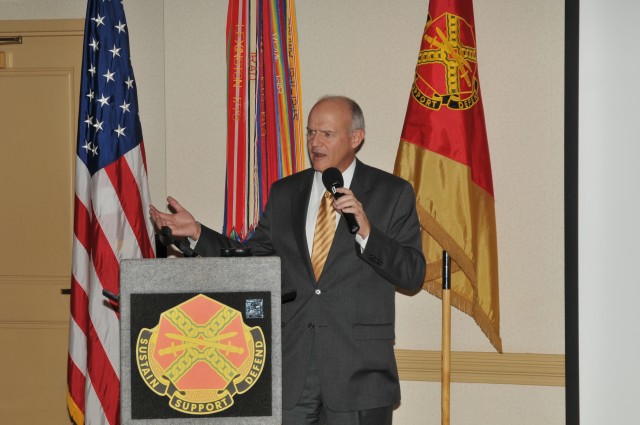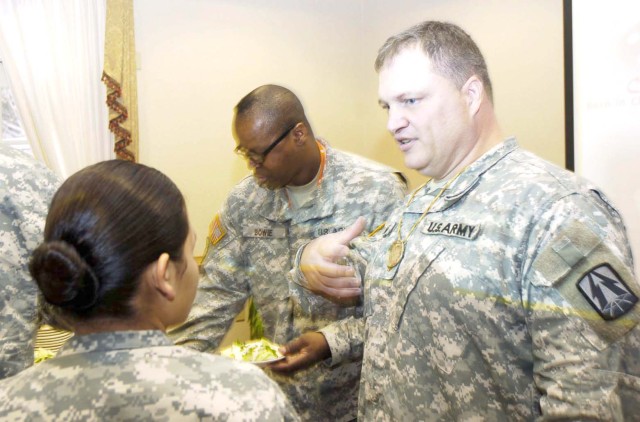FORT McPHERSON, Ga. - The Fort McPherson community gathered Nov. 17 at The Commons at Fort McPherson to honor the many contributions made by Native Americans to the United States as part of Native American Heritage Month.
The heritage month, first observed in 1990, aims to recognize inter-tribal cultures and educate the public about the heritage, history, art and traditions of the Native American and Alaska native people.
To fulfill that duty, Jim Langford, president and founder of both the Coosawattee Foundation and the MillionMile Greenway, spoke about his role as an archaeologist studying Native American cultures in Georgia.
"Mr. Langford took us on a 12,000-year journey on Native American heritage and how their heritage came to be," said Sgt. 1st Class Mark Steinfeld, U.S. Army Garrison Equal Opportunity advisor.
"Speaking as an archaeologist, he dug back in time and brushed upon us the little known, obscure facts on early Native American settlements, leaders and artifacts, which perfectly suited this year's national theme of 'Understanding Native American Heritage Now and Then.'"
Langford said understanding heritage is important because of the rich legacy of Native Americans.
"These people are important because they were here for 12,000 years. We've only been here 300 to 400 (years)," he said. "There are things we can learn from their cultures."
Among one of the more relevant things, especially in this time when concern over the Earth is growing in popularity, is the value the Native Americans placed on protecting the environment, Langford said.
"I hope to educate people today about the very complex societies that lived here, (the) environment they lived in, and how we became detached from the environment in a way," he said. "How can we expect to protect the environment when we are detached from it' We need to rediscover the values of these cultures."
Maj. George Lewis, the chemical, biological, radiological and nuclear officer for the 335th Signal Command (Theater), recently rediscovered the values of his culture.
Lewis, whose grandmother was Cherokee, recently joined the Lower Creek Muscogee Tribe, located just south of Troy, Ala. The tribe's vice chief, Ronnie Williams, attended Lewis' church and after speaking offered Lewis the invitation to join.
"Being a member of the tribe is like being a member of an extended family," Lewis said, adding the tribe meets at least once a month.
One doesn't have to be a member of a tribe to want to learn about the cultures, Langford said, adding there are many lessons today's Army can learn to make them better Soldiers.
With so many Soldiers deploying overseas, Langford said exposure to Native American heritage can help Soldiers appreciate and respect other cultures.
"It can help us appreciate other cultures in other countries if we learn to appreciate others in our own," he said.
Soldiers could also take motivation from the many Native Americans who served honorably in the past and present.
With this year being categorized as "Year of the NCO," time was taken during the celebration to look at shining examples of Native American NCOs, such as Cpl. Mitchell Red Cloud, who won the Medal of Honor for actions in the Korean War, and Staff Sgt. Conrad Begaye, who was awarded the Silver Star for his valorous actions displayed under fire in Afghanistan during an enemy ambush Nov. 9, 2007.
As for the non-Soldiers in attendance, Lewis said he hopes they can see there are still Native Americans working to keep their old customs alive.




Social Sharing